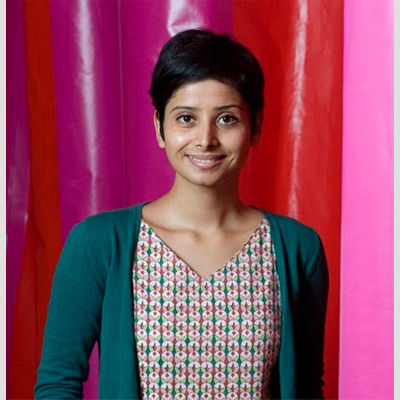Samiksha Ghimire
University Medical Center Groningen
University of Groningen, Groningen, the Netherlands
Last year I read a really impressive contribution to the Compass from young scientist, Samiksha Ghimire. She described her ambitious PhD project which aimed to implement and evaluate a TDM programme for anti-tuberculosis drugs in Nepal, an endemic setting, using alternative sampling strategies. I was literally on the edge of my seat reading this piece, impressed at the high relevance of the project, especially since Nepal is her home country, and also Samiksha’s clarity and maturity as a PhD student: I won’t give away how the piece concludes, but want to highlight that I found it very impressive the way that Samiksha faced the very real challenges that emerged in the project at that point in time. This month we hear from Samiksha, and, again, I was very impressed with her orientation with innovative technologies in TDM, some of which we haven’t heard about before in these interviews. In my search for Samiksha’s email, I came across the story of how she became an Eric Bleumink Fund Scholar, which is also very impressive. Congratulations on your achievements Samiksha!
Can you tell us a little bit about your respective roles? What is a typical day like for you?
I work as a PhD researcher at the department of clinical pharmacy and pharmacology, University Medical Center Groningen, University of Groningen, the Netherlands. My current work focusses on exploring new methods to individualize and optimize multi drug-resistant tuberculosis (MDR-TB) treatment. Along with Prof. Jan-Willem Alffenaar and Prof. Daan Touw, I am involved in designing and conducting clinical trials in TB endemic countries like Nepal. The results are utilized for answering relevant clinical questions on inter- and intra-individual variabilities in concentrations of core TB drugs and on optimal dosages. Another focus is the development of simplified, affordable point-of care tool using spectrophotometric devices for quantitative measurements of drug concentrations in saliva.
My day starts at 8:00 am, where I use morning energy to read new articles in the field. One-two days a week, I collect blood samples from TB patients at our tertiary care hospital in Groningen, which is utilized for therapeutic drug monitoring (TDM) guided dosing. Other days, I focus on proposal development for new studies, data analysis, and writing and reviewing manuscripts. As a part of institution inter-collaboration network, I also have the privilege to train health care providers in high TB burden settings like Nepal, Belarus and Moldova on different sampling strategies (using plasma, saliva and dried-blood spots) for TDM.
Is there anything that your laboratory does, or that is done at your hospital/center, that you would consider innovative?
Our center is pioneer in implementing TDM in a routine clinical care. With the help of MW Pharm, a dose adaptation software, doses are individualized based on drug levels in patient’s blood. The focus has been on anti-TB drugs, anti-fungal agents, HIV drugs, vancomycin, and immune-suppressants among others. In addition, our department focuses on developing and validating novel bio-analytical methods for quantification of multiple drugs using liquid chromatography- tandem mass spectrometry for TDM. Limited sampling strategies are in use, that have minimized sampling burden to both clinicians and patients. In addition, alternative samples for TDM such as saliva, dried-blood spots are being evaluated and developed for multiple drugs.
What technological innovations have entered into use during your career that have permitted a change, or evolution, in practice?
My vote goes to liquid-chromatography tandem mass spectrometry for drug quantification and next generation sequencing for detection of mutations associated with drug resistance for several antibiotics.
How did you become interested in your area of expertise?
I was always concerned by “one size fits all” approach and wondered if the conventional way of dosing was serving justice to the patients. As an undergraduate student, I believed that each patient condition is individual and requires individualized medicine based on basic parameters like body weight and age, among others. This led me pursue master’s degree in medical pharmaceutical sciences (2013-2015) with specialization in toxicology and drug disposition track, where I investigated toxicokinetics of different cholestatic and necrotic drugs in human precision cut liver slices (PCLS). After that, I became interested in pharmacokinetics of TB drugs where core drugs like rifampicin, isoniazid, levofloxacin, moxifloxacin, linezolid displayed large inter-individual variabilities on standardized dosages leading to therapy failure and development of further resistance. This encouraged me towards the path of personalized medicine.
Is there anything that you’ve seen or heard about recently and thought “I’d like to incorporate that idea at my center”?
Capillaries micro-sampling using capillary tubes can be a nice addition to the field of micro sampling.
What sort of research do you have on the horizon that you think might influence clinical practice in the future?
Randomized controlled trials validating PK/PD targets from pre-clinical models (hollow-fiber and animal models) to those observed in patients in clinics. For most bacterial infections, the efficacy of drugs can be predicted by AUC0-24/MIC and/or Cmax/MIC or %T/MIC ratios. The targets for optimal exposure are mostly derived from in vitro or in vivo models. Studies validating the targets in patients for individual drugs, and dose optimization, thereafter, based on attainment of establish target could be a real shift towards personalized medicine.
What do you consider is the future for TDM and CT? What are you excited about? What are the challenges we face?
While TDM and CT have been largely based on the pharmacokinetics aspect, integration of pharmacodynamics into the equation will give a better picture of efficacy. This of course, requires a validated target for optimal exposure. The future, I believe is pharmacokinetics/dynamics-based science for dose optimization. The hurdles are high-costs, availability, computational knowledge and user-interface associated with use of pharmacometrics software, which I believe will improve over time. Furthermore, I am quite excited about “micro-sampling” for TDM.
The content of the IATDMCT Blog does not necessarily have the endorsement of the Association.



